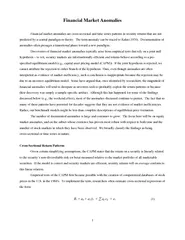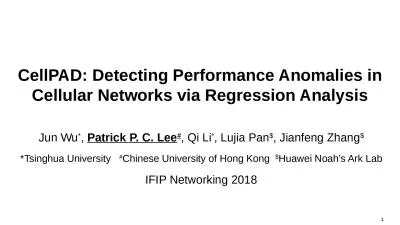PDF-Financial Market Anomalies Financial market anomalies
Author : celsa-spraggs | Published Date : 2015-04-29
The term anomaly can be traced to Kuhn 1970 Documentation of anomalies often presages a transiti onal phase toward a new paradigm Discoveries of financial market
Presentation Embed Code
Download Presentation
Download Presentation The PPT/PDF document "Financial Market Anomalies Financial mar..." is the property of its rightful owner. Permission is granted to download and print the materials on this website for personal, non-commercial use only, and to display it on your personal computer provided you do not modify the materials and that you retain all copyright notices contained in the materials. By downloading content from our website, you accept the terms of this agreement.
Financial Market Anomalies Financial market anomalies: Transcript
Download Rules Of Document
"Financial Market Anomalies Financial market anomalies"The content belongs to its owner. You may download and print it for personal use, without modification, and keep all copyright notices. By downloading, you agree to these terms.
Related Documents














